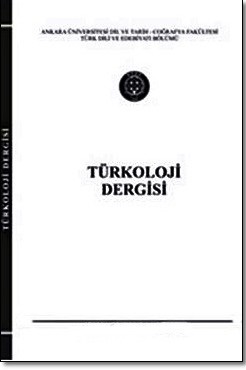Hüsn ü Aşk'ın izinde yarım kalan bir mesnevî: Nâz u Niyâz
Keçeci-zâde İzzet Molla’nın bilinen iki dîvân ve iki mesnevîsinden başka tamamlanmamış bir mesnevîsi bulunduğu yakın zamana kadar bilinmiyordu. Şairin Hazân-ı Âsâr adlı dîvânçesinin sadece iki nüshasında bulunan ve adı önceden konulduğu hâlde hikaye örgüsü eksik kalmış olan bu mesnevî’nin metni, 302 beyitlik “Giriş” bölümünden ibarettir. Her iki nüshadaki kayıtlarda Nâz u Niyâz başlığı ile verilen eser, adı ve söz konusu giriş beyitleriyle Şeyh Gâlib’in Hüsn ü Aşk mesnevîsini andırmaktadır. Daha önce de Gülşen-i Aşk adıyla bir Hüsn ü Aşk nazîresi yazmış olan şairin bu defa daha güçlü bir kurgu tasarladığı, ancak eserini tamamlayamadığı anlaşılmaktadır. Bu çalışmayla Keçecizâde İzzet Molla’nın kayıp Nâz u Niyâz mesnevîsi tanıtılmakta ve eserin karşılaştırmalı metni mevcut iki nüshaya dayalı olarak ortaya konulmaktadır. Söz konusu metin, gerek İzzet Molla'nın edebî kişiliği gerekse, Şeyh Gâlib'in Hüsn ü Aşk mesnevîsinin etkisi ve değerini göstermek bakımından da önemlidir.
Anahtar Kelimeler:
Keçeci-zâde İzzet Molla, Şeyh Gâlib, Nâz u Niyâz, Hüsn ü Aşk, nazîre
NĀZ U NİYĀZ: AN INCOMPLETE MATHNAWI ON ITS WAY TO HUSN U ASHK
It was unknown until recently that Kechedj̲i-zāde İzzet Molla who was believed to have penned only two diwans and two mathnawis, also had another unfinished mathnawi. The Mathnawi, that already has a title despite the plot being half finished, consists of an ‘ʻIntroduction’’, which comprises 302 couplets. The text is only to be found in the two manuscripts of the poet’s short diwan named Khazān-ı Āthār. The text, titled as ‘Nāz u Niyāz’ in both the manuscripts, resembles Shaykh Ghālib's famous mathnawi Ḥüsn u ʿAshḳ with regards to the title and prologue. It is clear that, the author who had previously written a nazirah to Ḥüsn u ʿAshḳ and titled it Gulshan-i ʿAshḳ, had this time contrived to produce a more powerful fiction but could not succeed in completing it. This article introduces Kechedj̲i-zāde’s missing mathnawi Nāz u Niyāz and makes a textual critic, based on the comparative analysis of the surviving two manuscripts. The text in hand must be seen as an important contribution that illustrates İzzet Molla’s literary persona and the value and influence Shaykh Galib’s Hüsn u Ashk has had
Keywords:
Kechedj̲i-zāde ʿIzzet Molla, Shaykh Ghālib, Nāz u Niyāz, Ḥüsn u ʿAshḳ, naẓı̇̄rah,
- Başlangıç: 1964
- Yayıncı: Ankara Üniversitesi
Sayıdaki Diğer Makaleler
HALİDE EDİP ADIVAR’IN DAĞA ÇIKAN KURT ADLI ESERİNDEKİ YOLCULUK NOTLARI’NA DAİR BİR İNCELEME
Hüsn ü Aşk'ın izinde yarım kalan bir mesnevî: Nâz u Niyâz
Halide Edip’in Vurun Kahpeye romanında farklı boyutlarıyla Millî Mücadele’ye yaklaşım
Turancılık mefkûresi bağlamında Halide Edib’in yeni Turan’ına dair
Halide Edip Adıvar’ın Nasrettin Hoca üzerinden ironik çağ eleştirisi: Maske ve Ruh
Halide Edip Adıvar’ın “Bir Hayatın Üç Perdesi” adlı hikâyesi üzerine bir tahlil denemesi
Halide Edip Adıvar'ın “Dağa Çıkan Kurt” hikâyesinde tema ve alegorik unsurlar
